GLIMPSES OF SPECIAL CHIN-NA COURSE
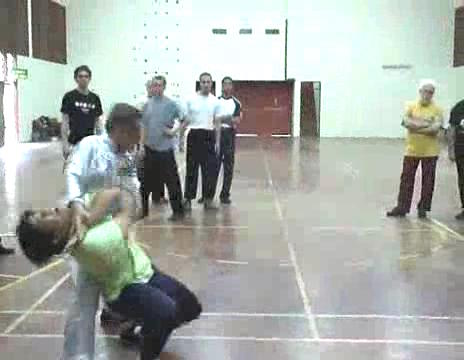
Is such a chin-na technique possible in real combat, and how would you escape if caught in one?
Chin-na, a special and compassionate way of fighting using holds and grips, is highly regarded in kungfu circles. It is often considered as the most sophisticated of combat techniques, as a chin-na master needs not only great skills but also strategies and tactics to apply chin-na successfully.
This special course on Shaolin Seventy Two Chin-Na Techniques held in Sabah from 8th to 14th June 2008, is one of Grandmaster Wong's most cherished courses, where he shared with course participants secrets that are kept exclusive to top disciples only.
The course was highly intensive. The participants learned not only 72 combat sequences incorporating the 72 chin-na techniques and their counters, but also the philosophy, strategies, tactics, and force training methods needed for successful chin-na application, as well as herbal medicine and remedial chi kung exercises to help chin-na victims recover.
1. Importance of Mind Training and Force Development
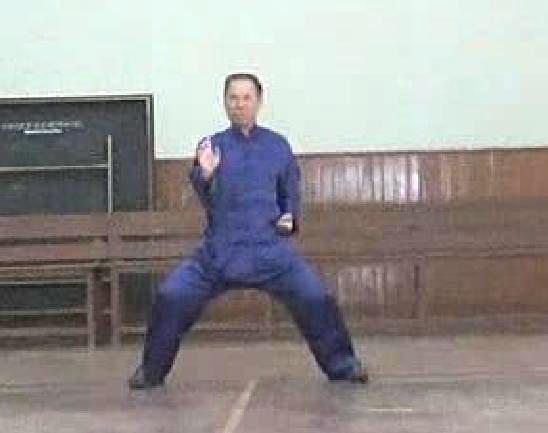
Chin-na is sometimes heard but little understood. It is a special and compassionate way of fighting using holds and grips. Even amongst its practitioners, one aspect of chin-na that is not usually realized is the importance of mind training and force development over techniques. This does not mean that techniques are not important; they are required to execute chin-na, but without mental focus and relevant force, techniques alone will be inadequate in successful chin-na applications. The video clips below show the training of mind and force in the Special Chin-Na Course.
Click here to download.
2. Applying Strategies and Tactics in Chin-Na Techniques
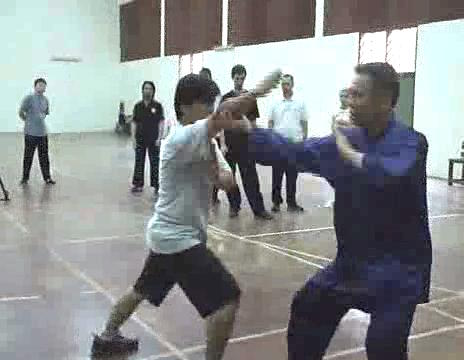
The first few of the Shaolin Seven Two Chin-Na Techniques are simple. As in many of our Shaolin Wahnam teachings, simple does not mean easy or ineffective. Indeed, because they are both simple to apply and effective in subduing opponents that these patterns are widely used. But merely applying the techniques may not result in effective application. You have to work out suitable strategies and tactics so that holding and gripping their arms become a logical consequence. A good strategy is to let them attack you, and a good tactic is to follow their momentum. Then holding and gripping their arms become easy.
Click here to download.
3. More Sophisticated Chin-Na Techniques
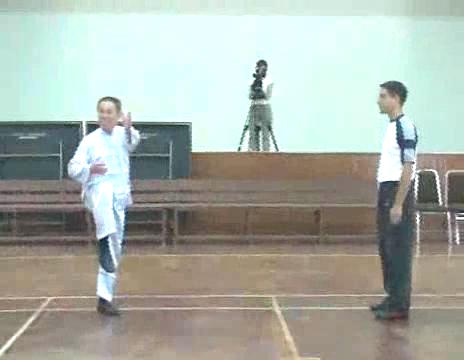
Can we apply such sophisticated techniques on our opponents in real combat? Of course, we can, if we know how. Tactics are used to help us in applying the chin-na techniques, and the examples given here are “tempt the opponent to attack in futility”, and “follow his momentum”. At the course, instead of telling the practitioners the counters to these sophisticated chin-na attacks, Grandmaster Wong asked them to work out the counters themselves, which they did excellently. Some examples are shown here by Andre, Ronny and Adam.
Click here to download.
4. Following the Opponent's Momentum in Chin-Na Attacks and Counters
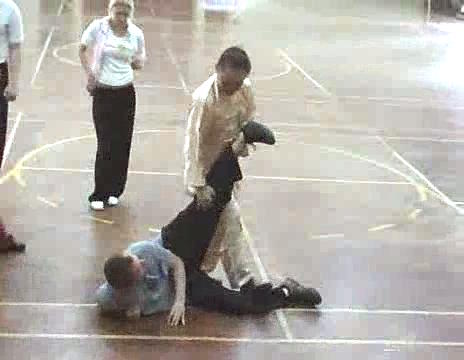
Many secrets were revealed at the Special Chin-Na Course, one of which was “Following the Opponent's Momentum”. This principle is significant in other dimensions of kungfu too, but especially important in chin-na in both attacks and counters. Indeed, by applying this principle, course participants on their own were able to work out counters to some very formidable chin-na attacks. For example, how would you counter a chin-na technique like “White Ape Ascends Tree”, where your one leg is held in an awkward position with your ankle or knee about to be dislocated, and your other leg stepped on with your other knee about being crashed?
Click here to download.
5. How to Subdue an Opponent with Chin-Na even when he Knows the Counter
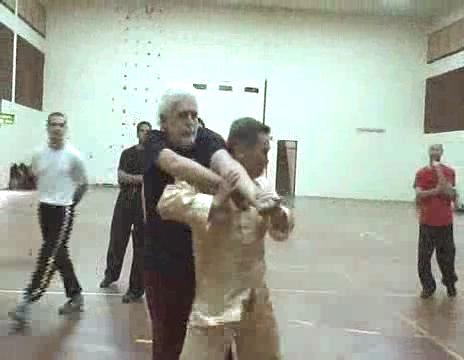
If a chin-na master wants to apply a certain chin-na technique on you, he can do so even when you know what is coming and also know the counters. It is not just the techniques that make the chin-na application successful, but also a harmonious application of skills, tactics and strategies. A chin-na master plans his attacks in such a way that subduing you with his intended chin-na technique or techniques is a certainty. The chin-na technique, “Immortal Carries Sticks”, was demonstrated in this video series. The master could dislocate an opponent's elbow and throw him over the shoulder or waist. Notice that this chin-na technique is different from a typical Judo shoulder or waist throw. In a typical Judo throw, the opponent may strike with his free hand, but in the chin-na technique, he is prevented from doing so.
< Click here to download.6. Chin-Na Techniques for Disloacting Wrists
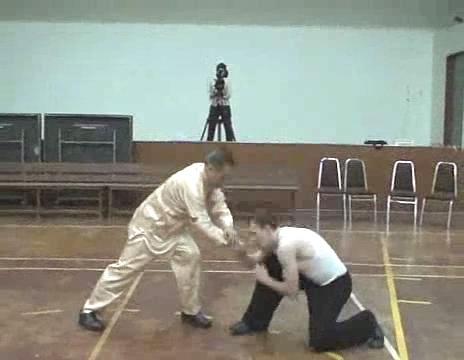
Dislocating wrist is an effective chin-na method. A few major ways of dislocating wrist, using patterns like “Bending Willow in Wind”, “Jade Girl Pluck Flower” and “Hiding Tiger's Tail”, were shown in the video series below.
The famous “chin see sau” (“chan si shou” in Mandarin) or “spiral-hand grip”, was also show. It is very effective in dislocating an opponent's wrist and is not easy to counter. There are, of course, counters to “chin see sau” and other chin-na techniques. The fundamental principle in the counters is to “follow the opponent's momentum”.
Click here to download.
7. Some Examples of Chin-Na Combat Sequences
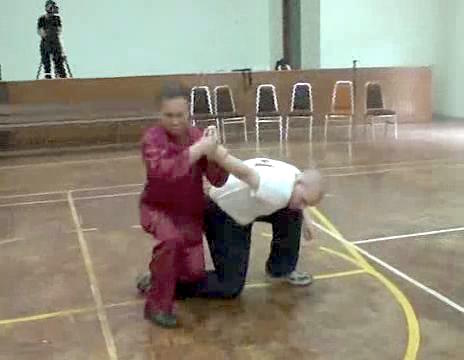
There are seventy two combat sequences for each one of the Shaolin Seventy Two Chin-Na Techniques. Each combat sequence incorporates three chin-na techniques. Sometimes in each combat sequence the chin-na exponent uses different techniques to subdue the opponent. Smetimes he uses the same technique three times.. The combat sequences performed here were “Old Eagle Catches Snake”, “Immortal Carries Sticks”, “Nun Carries Umbrella”, “Sitting Double Lifting Hands”, “Double Tigers Subdue Dragon” and “Squatting to Bend Lotus”.
Click here to download.
8. Marvelous Techniques Beget Marvelous Techniques
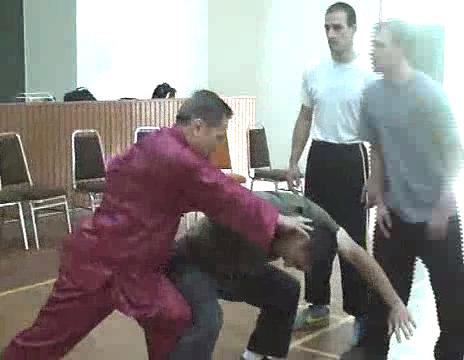
Two formidable chin-na techniques to dislocate an opponent's wrist were demonstrated here, namely “Immortal Plays Clappers” and “Golden Boy Worships Buddha”. The counter against “Immortal Plays Clappers” was profound. It used the opponent's momentum, locking his arm making it seemingly impossible to escape, while striking him with the elbow. The counter against this counter was equally intriguing. With a small twist, a seemingly impossible situation was reverse, manifesting the Shaolin saying that “marvelous techniques beget marvelous techniques”. The counters in the “Golden Boy” sequence revealed some marvelous techniques. These marvelous techniques depend on an important principle. Do you know what it is?
Click here to download.
9. Three Points of Time to Counter Chin-Na Attacks
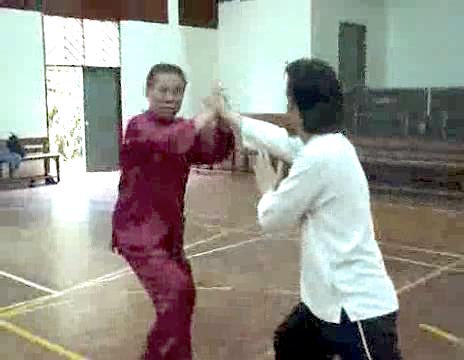
The numerous different points of time when countering chin-na techniques (or any techniques) may be classified into three broad categories, namely initial point, mid-point and end-point. In each of the two chin-na combat sequences, namely “Golden Boy Worships Buddha” and “Golden Cockerel Locks Throat”, the same chin-na technique was applied three times, and the responder countered it at the initial-point, the mid-point and the end-point. However, to enable participants see the complete process of the chin-na attack, the counters at initial-point and mid-point were purposely delayed.
Click here to download.
10. Countering Sophisticated Chin-Na Attacks
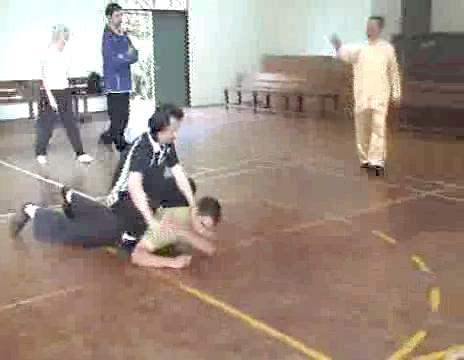
As chin-na is the most sophisticated of all attack techniques, if you know how to counter chin-na attacks, especially the more difficult ones, you should be able to counter all other forms of attacks too. Hence, in the more sophisticated chin-na attacks, instead of showing the counters, Grandmaster Wong asked the participants to work out the counters themselves. One such example was the chin-na pattern “Riding Dragon to Pull Tendons”, where you were spread eagle on the floor and an opponent sat on top of you. It was a great credit to the participants that they could work out some effective counters against the seemingly impossible “Riding Dragon” attack.
Click here to download.
11. Successful Application of Chin-Na Attacks and Three Points of Counters
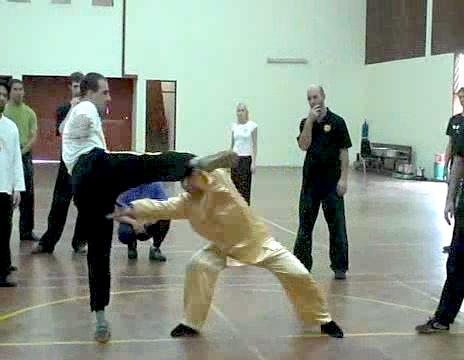
Some martial artists say that it is difficult enough to strike a person, applying chin-na techniques, which are more difficult than striking, is impossible. This statement clearly shows that they have no exposure to chin-na. When a chin-na master wants to apply a certain chin-na technique on you, he is almost certain to succeed — unless, of course, you are very skillful in the counters. In most of the chin-na combat sequences, participants applied the same chin-na attack again and again on an opponent who countered prior similar attacks on him. These successive same attacks also enable the participants learn how to counter them at three different points of time, namely at the end-point of the attack, as the attack is in process, and at the initial point.
Click here to download.
12. Good Timing and Good Spacing
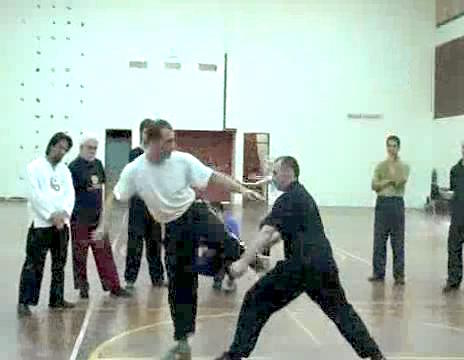
Good timing does not necessarily mean that one must be fast. Of course if you are too slow you are unlikely to be successful in combat, but sometimes it is useful to slow down your attack or counter. Some examples were shown in the technique “Black Tiger Guards Door”. In another technique, “Bail Moon from Sea Bottom”, good spacing was demonstrated. This technique was a deadly counter against kicks. Many martial artists may not know what to do when countered in this way when they kick. Three effective responses are shown in the video series here.
Click here to download.
13. Close-Body Fighting and Rapid Punches
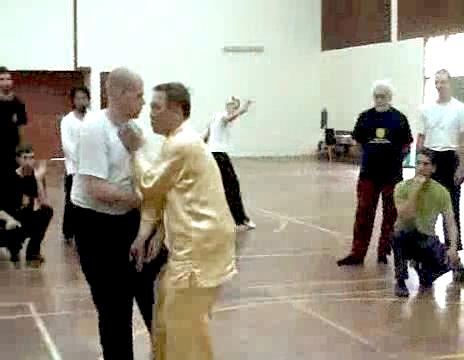
“Close-Body Tiger Claws” is an effective chin-na technique for close-body fighting. It is important that you cover your opponent effectively when applying this technique. Of course, there are many counters too. Many martial artists find it difficult to defend against a series of fast punches. Applying chin-na is an excellent way to counter rapid punches. “Lohan Embraces Buddha” shown here is just one example.
Click here to download.
14. Listening to Winds and Catching Goats
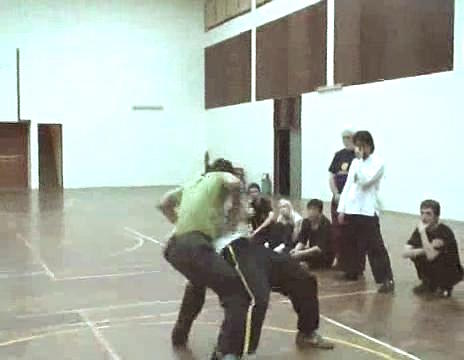
The poetic pattern “Tame Tiger Listen to Winds” is actually a very formidable chin-na attack which looks impossible to escape from. Yet, course participants were able to work out some effective counters. If you understand the underlying principles of the counters, you can apply them to overcome any attacks. Application of the double tiger claws in the pattern “Hungry Tiger Catches Goat” is one of Grandmaster Wong's specialties. The encounters between him and Dr Damian were free and spontaneous, and showed some interesting combat principles. The applications of this “Hungry Tiger” chin-na technique against the four categories of attack were formalized in the combat sequence demonstrated.
Click here to download.
LINKS
Glimpses of Special Chin-Na Course
- Importance of Mind Training and Force Development
- Applying Strategies and Tactics in Effecting Chin-Na Techniques
- More Sophisticated Chin-Na Techniques
- Following the Opponent's Momentum in Chin-Na Attacks and Counters
- How to Subdue an Opponent with Chin-Na even when he Knows the Counter
- Chin-Na Techniques for Dislocating Wrists
- Some Examples of Chin-Na Combat Sequences
- Marvelous Techniques Beget Marvelous Techniques
- Three Points of Time to Counter Chin-Na Attacks
- Countering Sophisticated Chin-Na Techniques
- Successful Application of Chin-Na Attacks and Three Points of Counters
- Good Timing and Good Spacing
- Close-Body Fighting and Rapid Punches
- Listening to Winds and Catching Goats
72 Shaolin Chin-Na Techniques
72 Shaolin Chin-Na Techniques
Combat Sequences of Shaolin Chin-Na
Kungfu Sets of Shaolin 72 Chin-Na Techniques
Shaolin Chin-Na Set
